If Lynyrd Skynyrd’s “Free Bird” is the sacred text of Southern rock, then its “Sweet Home Alabama” is the genre’s national anthem: the song that most compellingly articulates the pride in Southern culture implicit in classics such as the Allman Brothers Band’s “Midnight Rider,” the Marshall Tucker Band’s “Can’t You See” and “Free Bird” itself.
“Free Bird” is about breaking free from attachments, but “Sweet Home Alabama” is about coming home, back to the things that give you strength and grounding. The difference is reflected in the structure of each song: “Free Bird” starts out mournful, then explodes in ecstatic frenzy, while “Sweet Home Alabama” is built on an irresistible riff that circles around and around, drawing the listener in. Both tunes were highlights of Skynyrd’s three-night run at Atlanta’s Fox Theater in July of 1976, the source of the classic lineup’s only live release, One More from the Road, issued five months later, and though it was the album’s 14 minute-long version of “Free Bird” that became a mainstay of classic rock radio, the live version of “Sweet Home Alabama” is just as memorable.
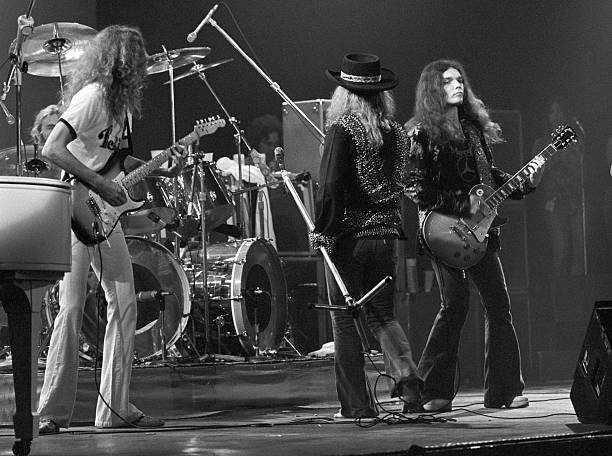
“Sweet Home Alabama” originated in an environment as far removed from the Fox Theater as could be imagined. The song took shape near the banks of Peter’s Creek in Green Cove Springs, Fla. in a small shack known as “Hell House,” where Lynyrd Skynyrd wrote and rehearsed its songs. Despite the fact that Hell House lacked air conditioning and was plagued by mosquitos, snakes and the occasional alligator (hence its not-at-all affectionate nickname), the band met there every day to work on new material. Skynyrd leader Ronnie Van Zant didn’t like to waste a moment of expensive studio time, so by the time they went to Atlanta to record their first album, (Pronounced ‘Lĕh-‘nérd ‘Skin-‘nérd), the musicians had the songs note-perfect, down to the individual guitar solos.
Skynyrd guitarist Ed King recounted In the documentary If I Leave Here Tomorrow how he and founding member Gary Rossington came up with “Sweet Home Alabama.” “I guess I got to rehearsal a little bit later than everyone else, because when I got there, Gary was playing this riff [plays slow chords]. And I picked up my Strat and just bounced mine off of his. Ronnie is sitting over on the couch, where he always sat, and he [made a motion that meant] ‘Don’t stop. Keep running it.’” After about 15 minutes, Van Zant announced that he was “going fishing,” and went to the dock on the creek bank. From there, he could hear the band working on the music. According to King, Van Zant came back after about an hour and a half with the complete chorus and all the verses memorized.
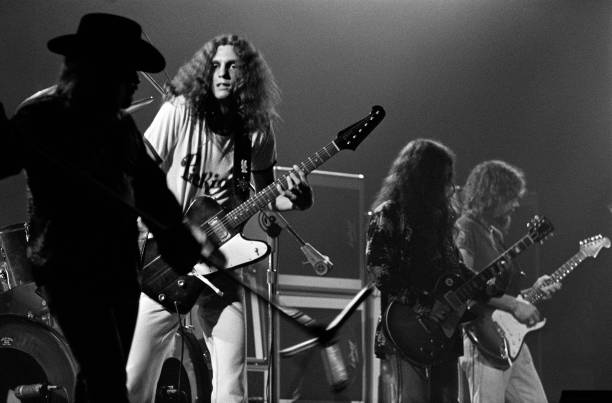
Al Kooper, who produced (Pronounced ‘Lĕh-‘nérd ‘Skin-‘nérd) during the spring of 1973, remembered that Van Zant called him weeks later about “a new song” he was eager to get down on tape. The band drove up to Kooper’s Studio One in Doraville, Ga., north of Atlanta, and played him “Sweet Home Alabama.” “I’ll see you [here] tomorrow,” Kooper told them. “This is a hit record.”
The initial “Sweet Home Alabama” backing track consisted of King on rhythm guitar, Leon Wilkerson on bass and Bob Burns on drums, with Van Zant contributing a scratch vocal. Rossington and Allen Collins recorded their guitar parts later, as did piano player Billy Powell, who overdubbed what session engineer Rodney Mills would later call “one of the great rock and roll keyboard performances.” Van Zant nailed the final lead vocal in a few takes, and the backup vocals, provided by gospel and soul veterans Merry Clayton (famous to rock fans for her legendary performance on the Rolling Stones’ “Gimme Shelter”) and Clydie King, were added during pre-mixing in California.
“Sweet Home Alabama” never made it onto (Pronounced ‘Lĕh-‘nérd ‘Skin-‘nérd), which was being pressed even as Van Zant called Kooper about recording the new tune. But it opened the 1974 follow-up Second Helping, giving Lynyrd Skynyrd its biggest chart hit and putting to rest any “difficult second album” fears the band might have had. No one even seemed to care that a song celebrating Alabama was written by three people who had never lived there: Van Zant and Rossington had grown up in Jacksonville, Fla., and King was from the decidedly un-Southern town of Glendale, Calif.
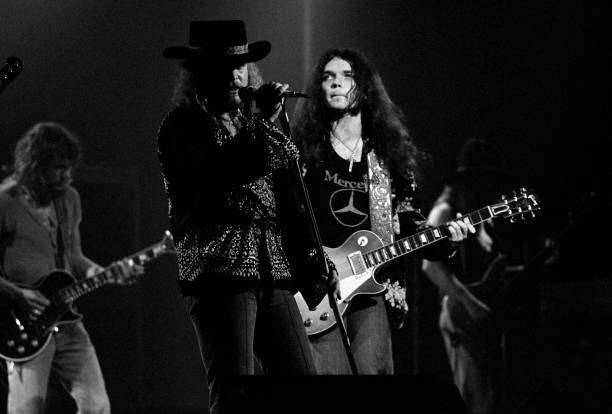
Why did Van Zant make the song about Alabama? The simplest answer might be that “Alabama” has the right number of syllables — ”Louisiana” and “Mississippi” could also work, but they don’t scan nearly as well with King’s initial riff. Alabama was also well known to the band: at this point in its career, Skynyrd was playing almost exclusively in the southeastern U.S., too broke to tour more widely even if audience demand had been there. “We used to do clubs all around Alabama, and driving through the country, it was beautiful,” Rossington recalled years later. “And great people: if you had trouble, they’d come out to help you.” (Though Skynyrd’s image became that of a gang of “good ole boy” rednecks, they wouldn’t have been seen that way back in the early 1970s: many Southerners would have dismissed them as hippies. That the members of Lynyrd Skynyrd were still welcomed in Alabama and across the region despite their long hair, bell-bottoms and fancy guitars is not only a testament to Southern hospitality, but also reflects the band’s charisma and the quality of their music.)
It’s impossible to consider “Sweet Home Alabama” in the context of Lynyrd Skynyrd’s career and not touch on the subject of Southern pride. Today, that term is associated with conservatism (both political and cultural), xenophobia and, at its worst, outright racism. But Southern pride initially flourished as a reaction to perceived Northern liberal contempt in the wake of the civil rights movement, when the image of the dumb, brutal Southern hick became ubiquitous in pop culture, from the gun-toting truck drivers who shoot Dennis Hopper and Peter Fonda’s characters at the end of Easy Rider (1969) to the inbred mountain men of Deliverance (1972).
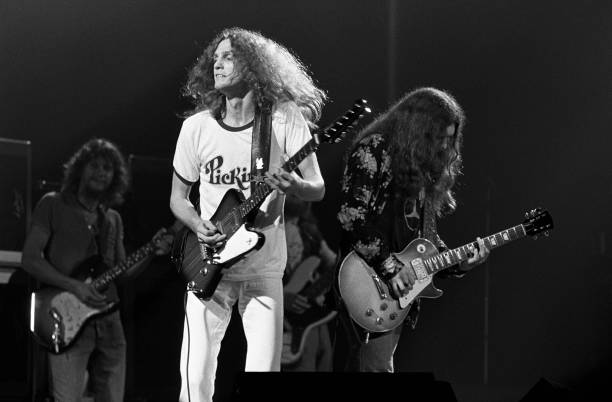
Neil Young played into this stereotype when he authored “Southern Man.” Having written, recorded and released Crosby, Stills, Nash and Young’s “Ohio” within weeks of the May 1970 killing of four antiwar protesters at Kent State University, Young was branching out into protest songs, and “Southern Man” (included on his third solo LP, 1971’s After the Gold Rush) was a prime example of his new way of writing. The song was directly addressed to Southern racists, and self-righteously outraged in a way that Young came to regret.
“‘Southern Man’ was an angry song,” Young later told his biographer Jimmy McDonough. “I wrote [it] in my studio in Topanga. [My wife] Susan was angry at me for some reason, throwing things. They were crashing against the door cause I was down there doing I don’t know what the fuck… It was probably my fault. ‘Southern Man’ was more than the South — I think the civil rights movement was sorta what that was about… [It’s] a strange song. I don’t sing it anymore. I don’t feel like it’s particularly relevant. It’s not ‘Southern Man’ –– it’s ‘White Man.’ It’s much bigger than ‘Southern Man.’”
Two years after writing “Southern Man,” Young released Harvest, his best selling album, which included another song about racism: “Alabama.” Ronnie Van Zant was a fan of Young’s music, but both “Southern Man” and “Alabama” irked him. He resented the implication that all Southerners were racists — “We thought Neil was shooting all the ducks in order to kill one or two,” he told Rolling Stone — and the lyrics of “Sweet Home Alabama” make his feelings explicit by citing Young by name.
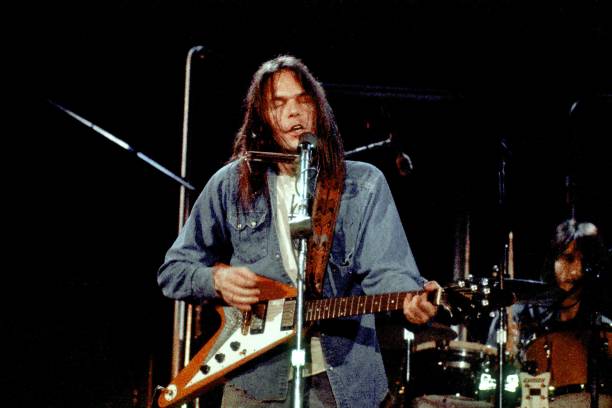
This “call out” was bracing for a number of reasons. Directly referencing other artists in song was not as common back then as it has since become, and when it was done, it usually took the form of praise (David Bowie’s 1971 track “Song For Bob Dylan,” for example). Van Zant’s lines “I hope Neil Young will remember/A southern man don’t need him around, anyhow” instead hint at violence: what will happen, after all, if “ole Neil” does indeed come around?
Still, Van Zant was quick to play down any question of real animosity: “Neil Young’s one of our favorite people,” he told interviewer Jim Ladd in 1976. “Neil thought it was very clever and cute, and just laughed. It was a joke.”
Gary Rossington echoed this idea decades later: “We loved Neil Young and all the music he’s given the world. We still love him today. It wasn’t cutting him down, it was cutting the song he wrote about the South down. Ronnie painted a picture everyone liked. Because no matter where you’re from, sweet home Alabama or sweet home Florida or sweet home Arkansas, you can relate.”
Young’s songs provide just one example of the judgemental attitude that is Van Zant’s real target in “Sweet Home Alabama.” The hypocrisy that Van Zant saw in outsiders is addressed in the third verse, with its mentions of four-term Alabama Governor George Wallace (who declared in his 1963 inaugural address that he stood for “segregation now, segregation tomorrow, segregation forever”) and the Watergate scandal enveloping Richard Nixon’s presidency. “Does your conscience bother you?” Van Zant asks, reminding (presumably Northern) listeners that the South isn’t the only part of the country with questionable political morals.
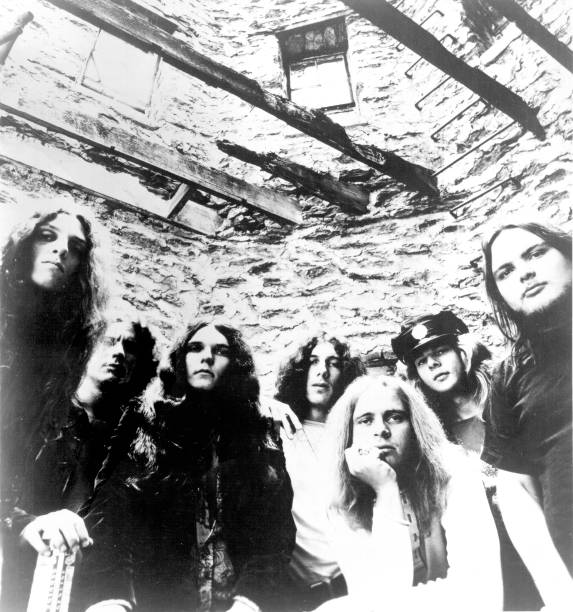
In interviews, Van Zant was cagey about the more conservative elements of “Sweet Home Alabama,” but he clearly was ambivalent about where he stood. When asked about the George Wallace line, he’d point to the disapproving “Boo! Boo! Boo!” in the backup vocals, but later in the song, he slips in an ad lib that doesn’t seem critical at all: “Sweet home Alabama, where the skies are so blue (and the governor’s true).” This ambivalence was always present during the band’s career, in ways that balanced Skynyrd’s embrace of its Southern character (such as playing in front of the Confederate battle flag) against what today would be considered more “liberal” leanings: arguing for gun control via the single “Saturday Night Special,” for instance.
There is no such ambivalence around the final verse of “Sweet Home Alabama,” which celebrates the aspect of Southern culture that had the most relevance for its writers: the music. Though often misheard as “In Muscle Shoals/They got the swamplands,” the first line of the verse actually references the Swampers, the in-house rhythm section (and owners) of Sheffield, Ala.’s Muscle Shoals Sound Studio. Lynyrd Skynyrd had come to Muscle Shoals back in 1971 to record their first demos, produced by Swampers guitarist Jimmy Johnson. But Van Zant wasn’t just paying tribute to people who had once helped out his band: the Swampers (also featuring bassist David Hood, keyboardist Barry Beckett and drummer Roger Hawkins) had played on hundreds of records from Aretha Franklin, Wilson Pickett, the Staple Singers and Etta James –– records that helped inspire Skynyrd’s sound.
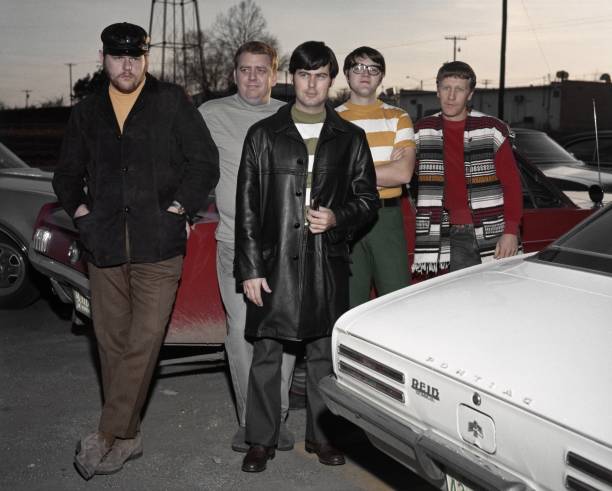
The Swampers were the ultimate example of white southerners who had thoroughly absorbed Black music and understood it in their bones. In that sense, they paved the way for Southern rock as a whole, and represented the polar opposite of the bigoted Southern stereotypes in Young’s “Southern Man.”
Lynyrd Skynyrd’s love for its Southern heritage was further evidenced by the circumstances leading up to the 1976 performances captured on One More from the Road. Skynyrd’s three-night Fox Theater stand was the culmination of a long campaign to save a building that had been at the center of Atlanta’s cultural life for decades. The Fox was originally a lavish “dream palace” cinema, in a distinctive Moorish style. Opened in 1929, it grew into one of Atlanta’s premier movie theaters and dance halls, hosting shows by swing bands and country and western acts. But by the early 1970s, it had fallen into disrepair, and telecommunications company Southern Bell wanted to buy the property and replace it with a parking garage. A campaign to save the building was organized, and money raised by performances from artists including Lynyrd Skynyrd and Liberace (who, tragically, never appeared on a double bill together).
The Fox dates were significant for Lynyrd Skynyrd particularly in that they served to introduce a new band member. In the three years between the writing of “Sweet Home Alabama” and the performance captured on One More from the Road, two of the musicians who originally brought the song to life were gone from the lineup: drummer Bob Burns, who suffered a mental collapse during a 1975 European tour, was replaced by former Marine Artimus Pyle, while “Sweet Home Alabama” co-writer Ed King abruptly exited during that same tour after getting berated by the perfectionist Van Zant for breaking some strings during his “Free Bird” solo.
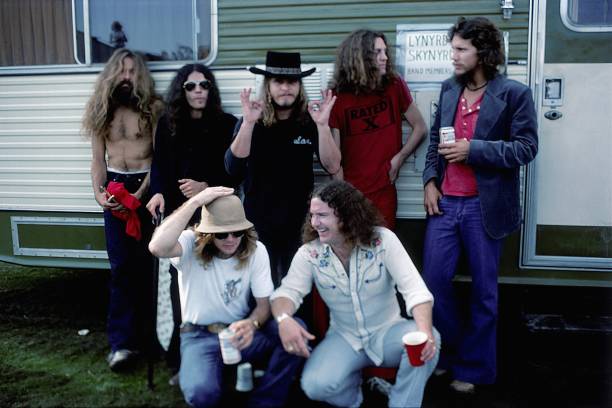
For several months, Allen Collins and Gary Rossington had to simulate Skynyrd’s trademark three-guitar attack with only two guitars. Then, new backup singer Cassie Gaines mentioned that her little brother could play. Van Zant and the others were hesitant, but they eventually let him sit in during a May 1976 show in Kansas City, and after a few more jam sessions, Steve Gaines was brought in as a full-time member. The Fox Theater shows were his official debut with the band.
By this time, Lynyrd Skynyrd’s fans were intimately familiar with “Sweet Home Alabama,” which lends an extra air of celebration to what is already a celebratory performance. Assuming the sequencing on the One More from the Road album accurately reflects the order of the set list, “Sweet Home” was the sign that the show was approaching its climax, leading as it does into two guitar freakouts, “Crossroads” and the epic closer “Free Bird.”
One advantage of being able to access these “Sweet Home Alabama” stems in KORD is the option of muting the crowd’s reaction to more clearly hear what makes the song so effective. Isolate the three guitar tracks and you’re getting the bare essence of Lynyrd Skynyrd — the interplay of three master soloists in service to a song. The surprise is how laid back they sound here. For the bulk of the performance, Rossington, Collins and Gaines stick to playing the main riff in unison. They aren’t exactly in lockstep — each adds his own distinct spin on the riff — but they only really start blazing during the solos, which they take in turn (Rossington in the mid-song break, Gaines at about 4:45 and Collins at the end). If you then mute the guitars and instead isolate Pyle’s drums, Leon Wilkeson’s bass and Billy Powell’s amazing piano, you’ll hear the glorious honky-tonk engine that drives the song. As much as Lynyrd Skynyrd is known as a guitar band, it’s the rhythm section that is the group’s secret weapon.
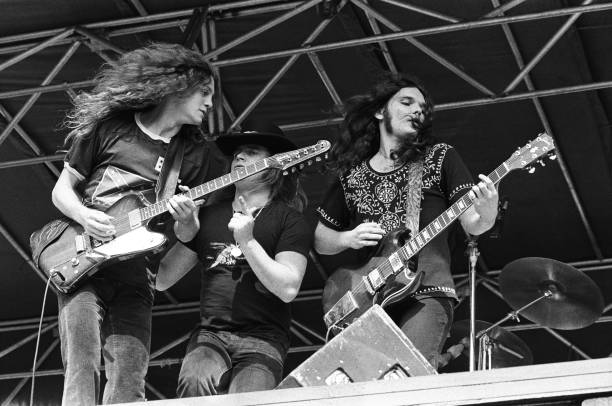
Another element of Skynyrd’s evolution as a band becomes evident if you isolate the vocal tracks. Backup singers the Honkettes (Van Zant’s name for the trio of Cassie Gaines, JoJo Billingsley and Leslie Hawkins) were by now an integral part of Skynyrd’s stage show, and “Sweet Home Alabama” is a perfect example of how they incorporated Southern gospel into the band’s sound. They swoop in behind Van Zant’s lead with wordless “Ahhhs…,” accent Rossington’s solo with shouts of “Alabama!” and throw in an Aretha-esque “Yes they do!” when Van Zant first mentions the Swampers.
Van Zant’s performance demonstrates the strength of his instincts as a band leader. He seems most concerned with maintaining the song’s momentum, as opposed to using it as a vehicle to show off his vocal chops. He throws in easy asides (“There’s good people in Alabama. Let Mr. Young know that, too”) and directs the players (as when he introduces the Oklahoma-born Steve Gaines’ solo with a good-natured “C’mon, Okie, meet Atlanta”). Look up Lynyrd Skynyrd performance footage on YouTube and you can see that Van Zant was never a preening frontman of the Mick Jagger type. He spends his energy steering the band, his commanding presence made all the more remarkable by his refusal to hide how short he was: in an era of platform shoes, Ronnie Van Zant famously performed in bare feet.
Of course, there’s also an enormous amount of retroactive pathos to this recording of “Sweet Home Alabama.” The listener knows that in a scant 15 months, all these young, talented and supremely confident musicians will either be gravely injured or dead.
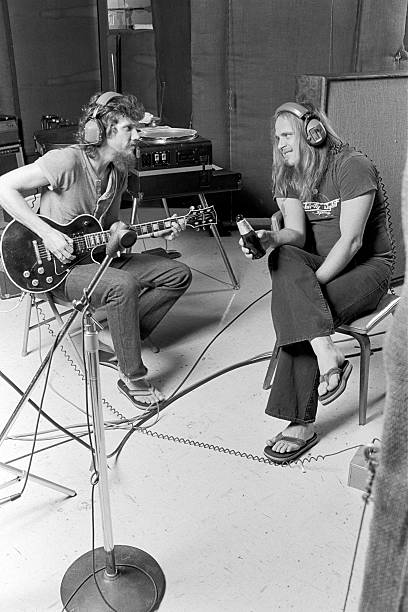
We’ll never know how many great songs and performances were lost in the Oct. 20, 1977 crash that killed Van Zant, the Gaines siblings and assistant road manager Dean Kilpatrick as well as the plane’s pilot and co-pilot. The crash effectively ended Lynyrd Skynyrd as a band (though they would regroup in the late 1980s with Ronnie’s brother Johnny taking over on vocals). Nor can we say how the songs they had already released would have evolved in meaning as the band progressed in its career, particularly when it comes to “Sweet Home Alabama.” Would Van Zant’s interpretation of his biggest hit have changed had he lived through the Reagan revolution, the Clinton years, or the election of Barack Obama? Would he have emerged as a voice of Southern progressivism, or become more reactionary as he aged? “Sweet Home Alabama” will always be a song of celebration, but in Van Zant’s absence, just what it’s celebrating will be open to interpretation.
And what about Neil Young, the guy who arguably inspired the song? He’s endured well into the 21st century, produced a vast body of work, inspired the punk and grunge movements, and came to represent a certain strain of cranky boomer activism. Back in the 1970s, he took Lynyrd Skynyrd’s rebuke with good grace — partly out of a canny sense of PR, but mainly because he recognized “Sweet Home Alabama” was superior to the songs it was criticizing. “‘Alabama’ richly deserved the shot Lynyrd Skynyrd gave me with their great record,” he wrote in his memoir, Waging Heavy Peace, in 2012. “I don’t like my words when I listen to it today. They are accusatory and condescending, not fully thought out, too easy to misconstrue.”
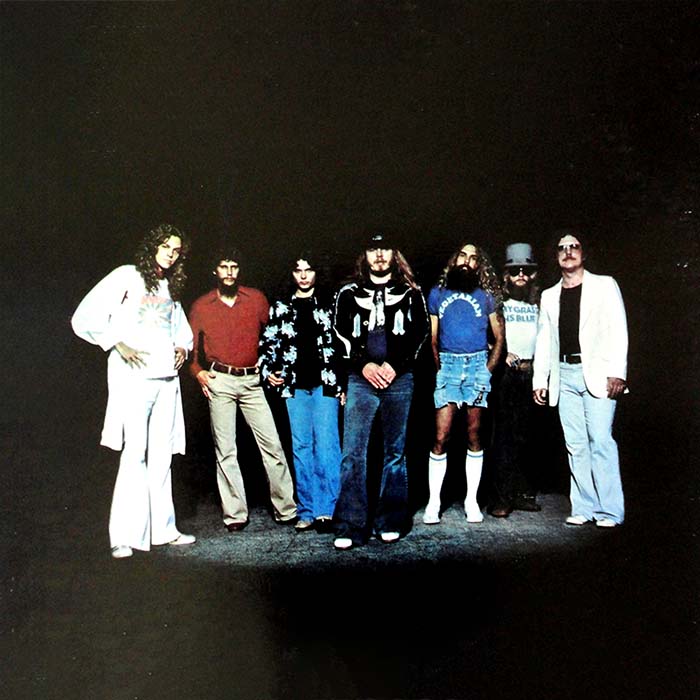
Young in fact had been in contact with the Lynyrd Skynyrd camp following the success of “Sweet Home Alabama.” According to writer Cameron Crowe, Young offered Van Zant three songs he had written for Skynyrd to cover: “Sedan Delivery,” “Powderfinger” and “Captain Kennedy.” (The first two would get epic rock makeovers courtesy of Young’s backing band Crazy Horse and appear on his 1979 album Rust Never Sleeps, while the final would emerge a year later on the far less celebrated Hawks & Doves.) Van Zant himself took to wearing a promotional t-shirt for Young’s 1975 album Tonight’s the Night, both in concert and on the cover of Lynyrd Skynyrd’s 1977 album Street Survivors, the last album of the group’s classic era.
Young played his “Alabama” at a gig a few weeks after the plane crash that took Ronnie Van Zant’s life. He paid tribute to Lynyrd Skynyrd by adding a few choruses of “Sweet Home Alabama” to the end, as if to declare once and for all which song got the last word.
Related Songs





